You can easily modify a pre-installed report and use the “Save As” feature to slightly change the name and create a new report. This allows you to keep a copy of the original report so you can use the copy to modify, add filters, etc.
For example: If the report was originally called “Awesome Report April” You might change it to “Awesome Report April – AMEX”.
To customize an existing report click the [Edit] button on the report you want to modify. At the top of the Report, a Column Graph is displayed. Click the Gear to the right to change the properties of the Graph. You may prefer to display a bar graph, for example. This is where you can also make more configuration changes like adding a title for your chart, or removing the Chart altogether.
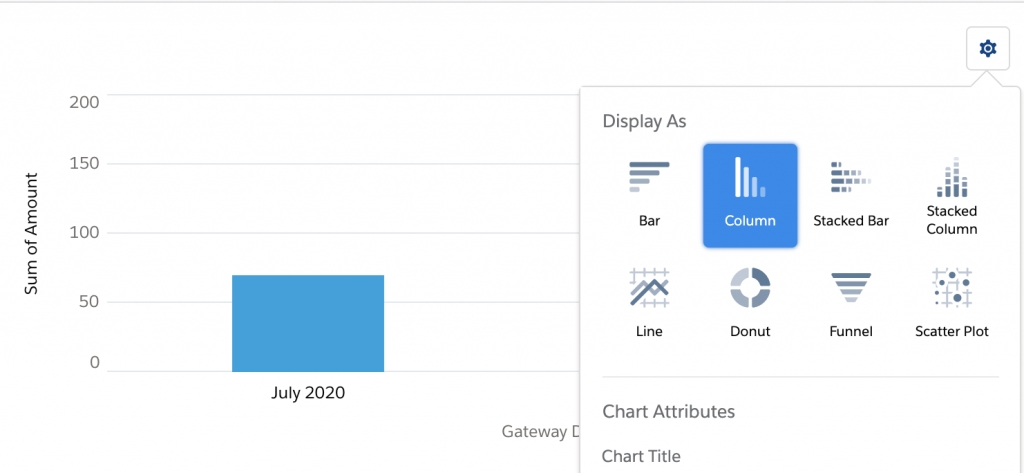
Below the graph, are the Chargent Field values. You can toggle the Row Counts, Detail Rows, Subtotals, and Grand Total switches at the bottom to adjust the report to your liking.
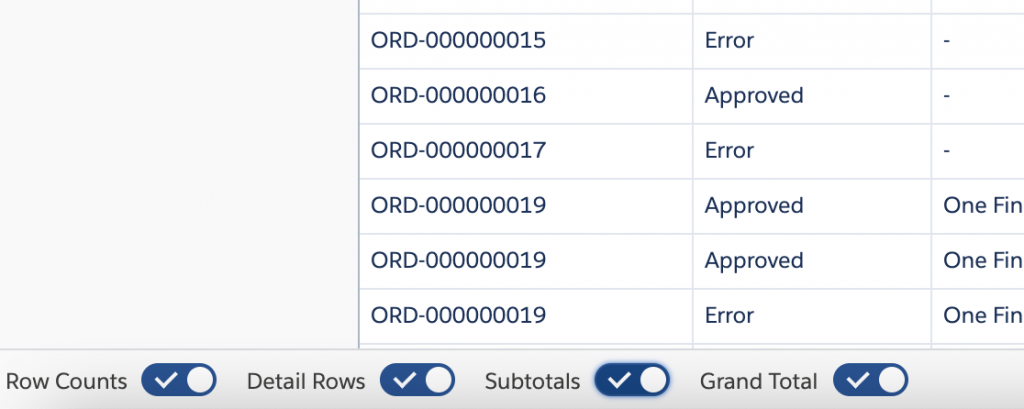
Not all of the Chargent Fields are displayed on the report. For example, If you’re doing echeck transactions as well as credit card transactions you may want to show the bank account fields on the report.
To make changes to the report, click [Edit] on the top right. Under Columns, you can add, remove and reposition the fields to build a report that is most useful for you. In this example, we want to see the bank account fields on the report, so we are going to add Bank Account Name and Bank Account Last 4.
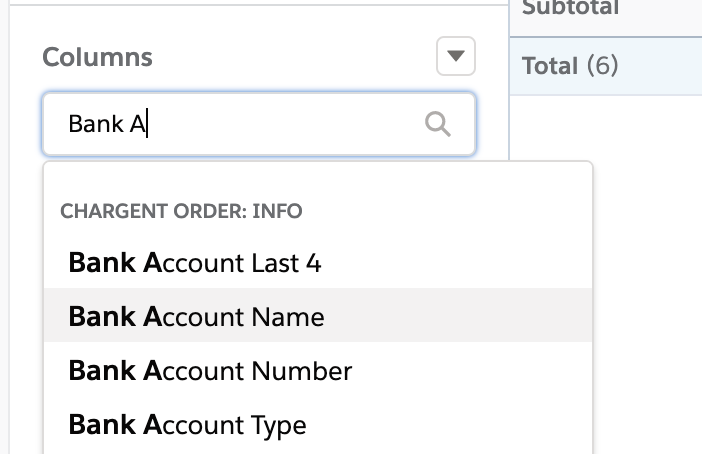
Make Report Groupings
Report Groupings allow you to group data together for faster analysis. For example you might want to break out credit card and bank account transactions on your report. To do that, you want to add a grouping based on Payment Method. Simply click the dropdown arrow and select ‘Group by this field’ next to Payment Method. You will now have grouping based on the Payment Method.
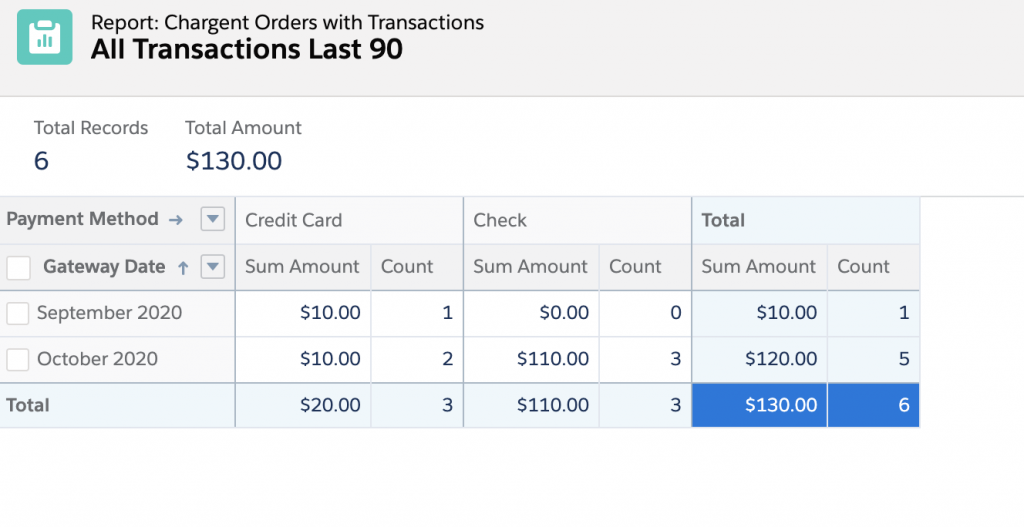
Setup Report Filters
Report filters allow you to drill down into specific data by filtering specific types of transaction to be displayed on the report. Let’s say your CEO wants to see a report that only contains American Express Transactions. You can use a Filter to display only those records by filtering the report using the Card Type equals American Express.
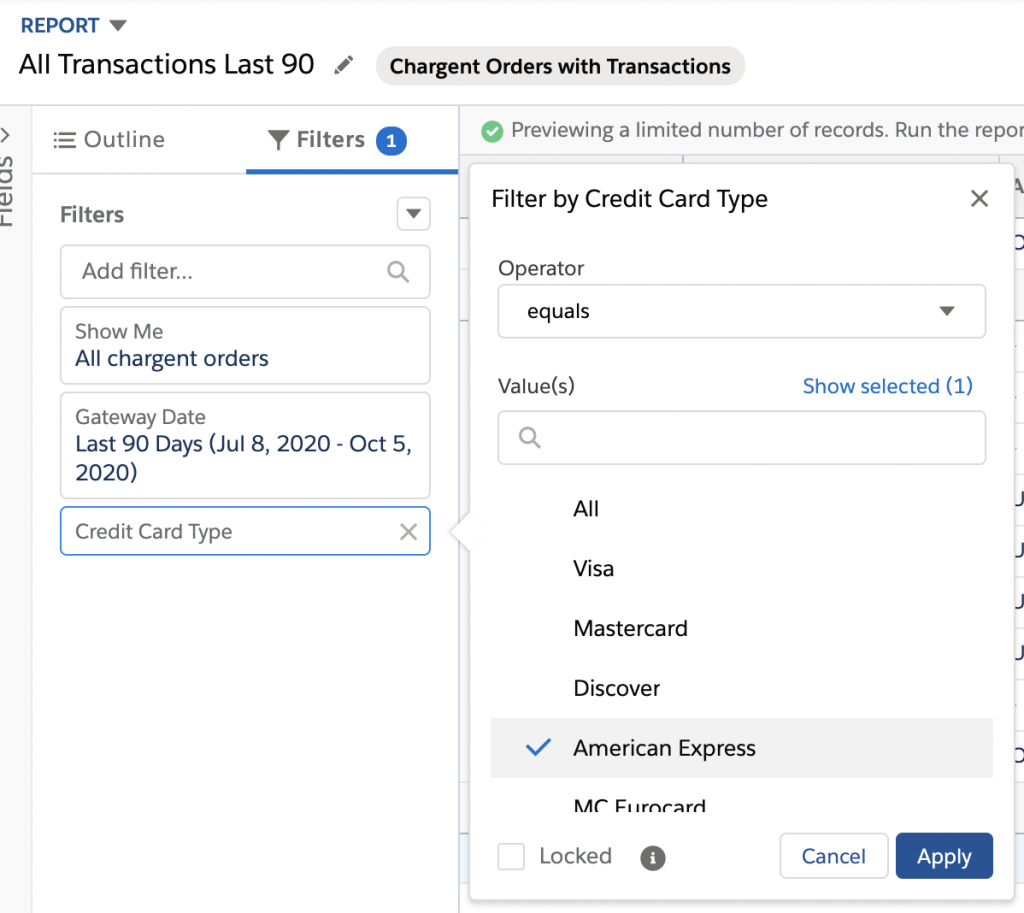
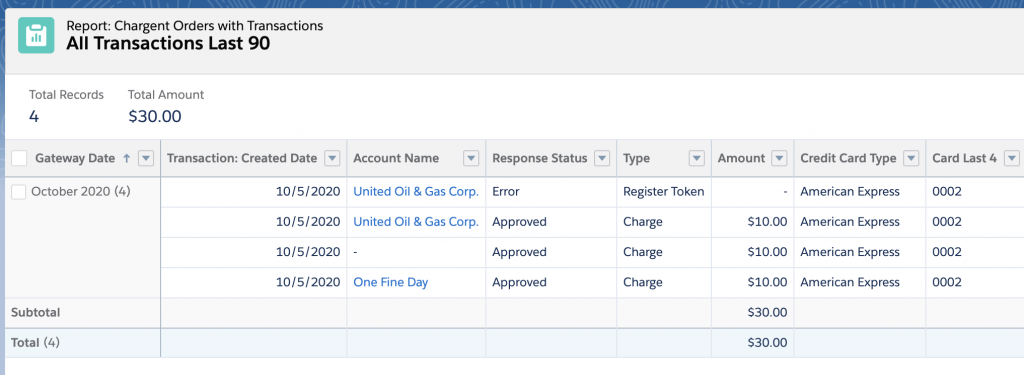
Check Payment Errors from Yesterday
The Payment Errors from Yesterday report will show you any records that have had errors from the previous day. This allows you to update the credit card or bank information as well as potential issues with a customer’s address.

In the below example you can see the following.
- 3 transactions were declined yesterday
- How much each transaction was
- The total of all declined transactions that need to be collected

From here you can click into the Transaction Record to obtain additional information in the Gateway Response fields. You can see why the transaction was declined. For credit cards it can often be one of the following (but not limited to), depending on your settings and the customer’s credit card.
- Insufficient funds
- Address Verification Failed (also known as AVS)
- CVV (Card Verification Code) didn’t match
- Invalid Credit Card number
For Bank Accounts it can be one of the following (but not limited to):
- Insufficient funds
- Account Number is invalid
- Routing Number (BSB Number in Australia) is invalid
You can verify that the information was entered correctly or you may need to contact your customer to obtain the correct data.

Pro Tip: It’s often useful to have the higher dollar amounts at the top for your Accounts Receivable so you are reaching out to the higher dollar values first. You can edit the report to show the amounts descending from highest to lowest.




